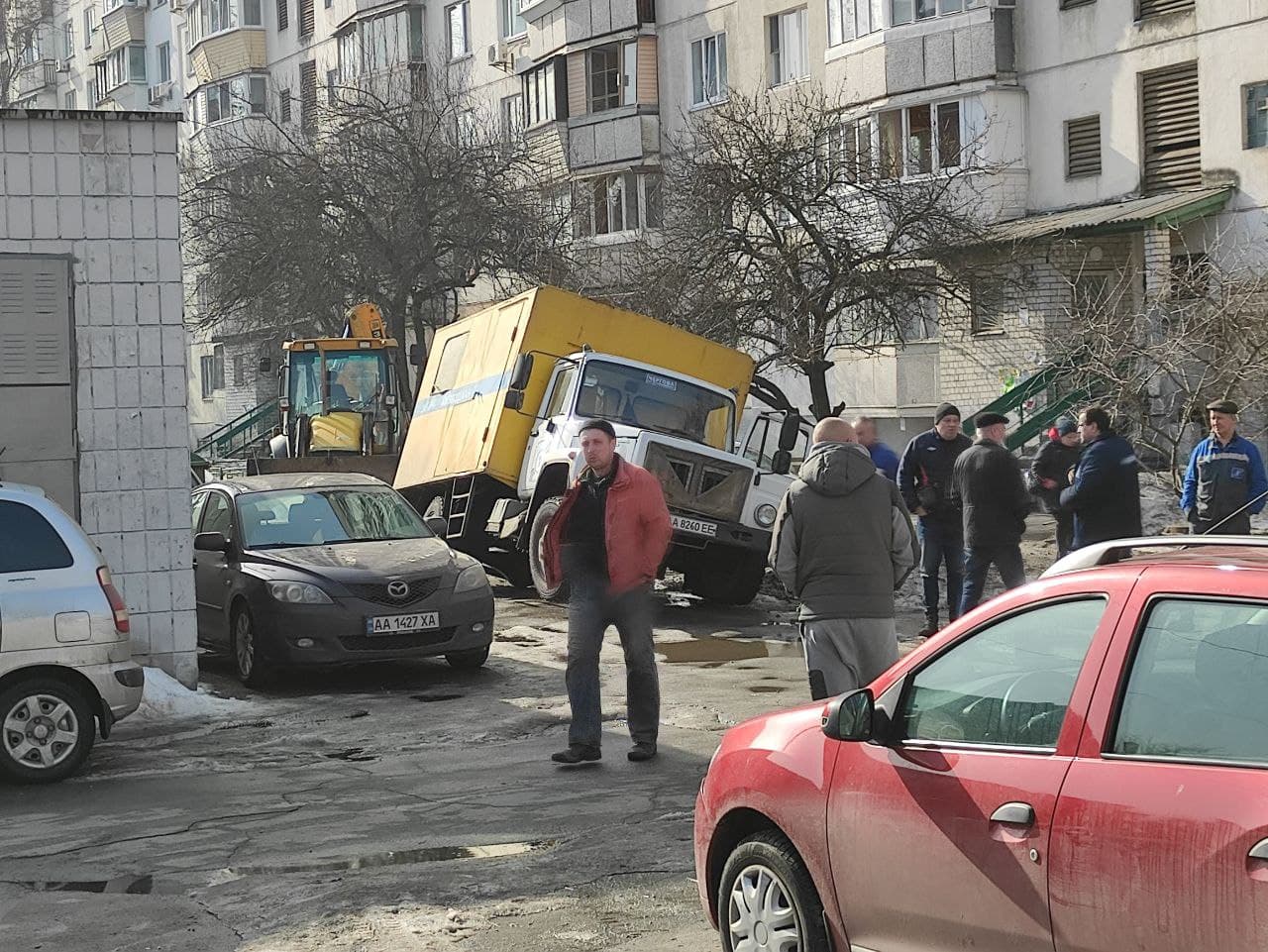With the arrival of spring, asphalt melts along with the snow. As always, the problem is first noticed by citizens, not the city authorities. Potholes and cracks appear in the road surface. Most complaints were received in the Solomensky district of Kyiv. Some people jokingly wrote on social media that "it feels like someone is running around the city at night and digging with a shovel."
We received a photo from our subscribers that an emergency vehicle and special equipment that arrived to help the emergency workers fell into a hole on 19 Holosiivskyi Avenue during the repair of the site. It would be funny if it weren't so sad.
Melting snow and asphalt: how to solve the problems of Ukrainian roads photo 1
And here is the situation with roads in Kharkiv.
Naturally, the mythical "they" are to blame for everything. Contractors, employees, the mayor, criminals? Why can't the capital of a European city fix the road surface? Not to mention smaller cities with no roads at all. What is the problem? Who is to blame for such a poor quality of roads? Answered Oleksandr Sergienko, director of the analytical center "City Institute".
"It's difficult to approach this issue objectively because human psychology is so organized - to notice the bad and forget the good. The physics of the process should explain why asphalt melts with snow. A road surface with ice and snow gradually cracks. The water in the road surface freezes, expands and tears the asphalt inside. It is speculation and exaggeration to say that this is the case all over Kyiv."
According to him, over the past 6 years, 1,100 km of roads in the capital have been overhauled (not just reconstructed) out of the existing 1,660 km. It is clear that this was primarily done for main streets, and as we can see, there are no problems on them. The rest of the roads that were not repaired overhauled have potholes and cracks.
"The situation is such that these emergency roads, depending on the size of the pit or crack, must be repaired either by Ukravtodor or on the spot by local road companies, which naturally lack the appropriate capacity. That's why we see a picture where everything is fine in the center, but everything is bad near houses and in residential areas."
We also asked political scientist and expert Viktor Medved how objective the information about the "normality of such a problem" is.
"If we look at this issue from the perspective of history, as we saw in 2020, 2019, and 2018, it is logical to assume that the problem with roads after winter is normal. But if we dig a little deeper, we should ask the question: what exactly is the reason for this "melting" of asphalt? And I will answer it."
The expert is sure that the problem is related to the fact that 90% of the roads are in a state of emergency. Their "emergency repairs" are done for a short period of time, so to speak, before the start of major repairs. Accordingly, the service life of this "patching" repair can be at most a month or three. But, as a rule, it survives the winter, and then we see what we are seeing now."
"All the things they patched up there from March to December will start to come off again in March next year. There has never been a faster pace of road construction in Ukraine, and there is no such thing. The current level of funding allows us to maintain the current level of accidents, so we need to be proactive."
Medved is confident that in order to work in this way, it is necessary to budget not just 80 billion, but the real 200 billion. The money should be used to build new roads. Then we can build first-class highways at a faster pace over the next 20 years. Accordingly, if we allocate 400 billion for financing, it means that we will build them in 7-10 years. The faster we build, the less the previous roads wear out.
